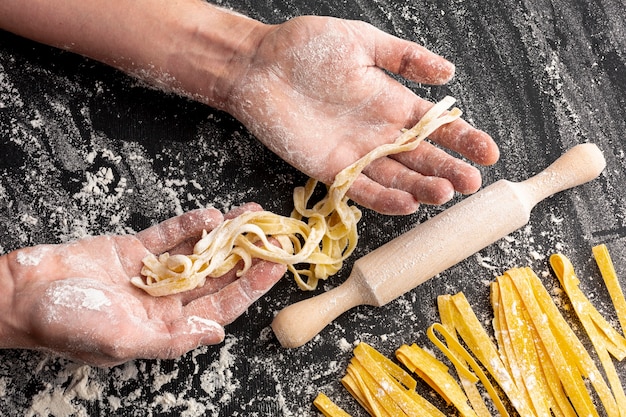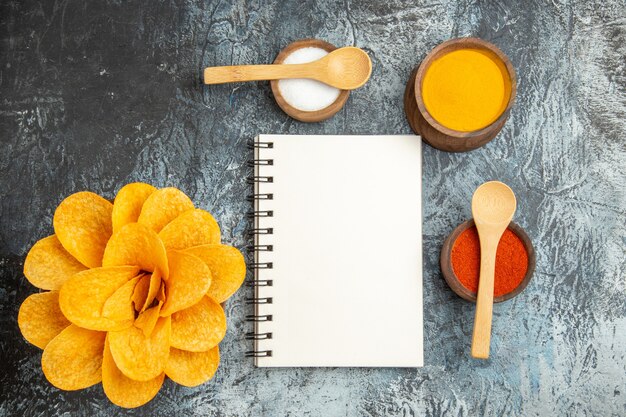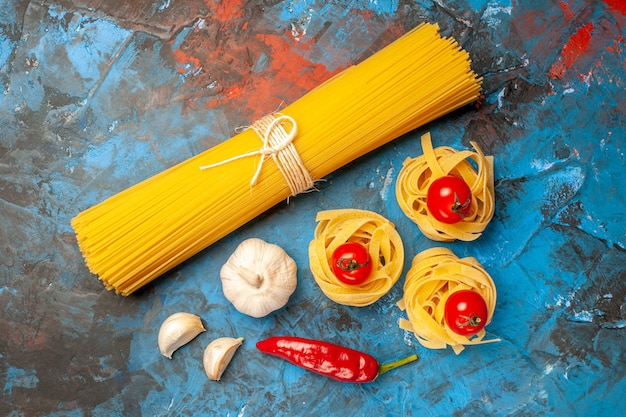Alright, you've got yourself a spaghetti squash, eh? You're probably wondering how long to cook it, right? Well, you've come to the right place! I've been cooking up a storm with this versatile veggie for years, and let me tell you, I've learned a thing or two about getting it just right.
In this guide, I'm going to walk you through everything you need to know about cooking spaghetti squash – from the best methods to the perfect timing, and even some delicious ways to use it once it's cooked.
So, grab your apron, a good knife, and let's get cooking!
(Part 1) All About Spaghetti Squash: A culinary gem

Before we dive into the cooking part, let's talk about this fascinating fruit (yes, you heard that right, it's a fruit!). It's got this beautiful, gourd-like shape, and when you cut it open, it reveals these long, spaghetti-like strands. It's no wonder it's called spaghetti squash! It's a bit of a culinary mystery that always surprises people with its texture and versatility.
The Benefits of Spaghetti Squash: A nutritional powerhouse
Besides being a fun and unique veggie, spaghetti squash is also packed with nutrients. It's a good source of vitamins C and A, potassium, and fiber. And because it's naturally low in calories and carbs, it's a great addition to any healthy diet. I find that it's a brilliant way to bulk up a meal without feeling like you're stuffing yourself with a ton of calories. It's a guilt-free way to get your vegetable fix, you know?
Choosing the Right Squash: Picking a Winner
The first step to delicious spaghetti squash is choosing the right one. Here's what to look for:
- Size: A medium-sized squash is usually best for a small family, but if you're cooking for a crowd, go for a larger one. I generally prefer medium-sized ones, they tend to be easier to handle and cook evenly. You don't want a squash that's too big for your oven, trust me!
- Weight: A good spaghetti squash should feel heavy for its size. This indicates that it's well-hydrated and has plenty of flesh inside. Avoid any that feel light or have soft spots. A good squash should feel firm and solid, like a well-filled fruit.
- Color: The skin of the squash should be a deep, rich yellow color, and it should be free of blemishes or bruises. A vibrant yellow colour usually means the squash is ripe and ready to cook. You want that bright, sunshine yellow, it's a sign of a good squash.
(Part 2) Cooking Methods: The Ultimate Showdown

Now, let's get to the good stuff – cooking! There are a few different methods you can use, and each has its pros and cons. I'll break them down for you, and you can pick the one that suits you best. I'll tell you my personal favorites, but ultimately, the best method is the one that works for you and your kitchen!
1. Roasting in the Oven: The Classic Way
This is my go-to method, and it's super simple. All you need is an oven and a sharp knife. I love roasting because it brings out the natural sweetness of the squash, and it gives it a lovely, slightly caramelized flavor. It's a classic method that produces wonderfully tender and flavorful squash.
How to Roast Spaghetti Squash
- Preheat your oven to 400°F (200°C). Make sure your oven is nice and hot before you start, it helps the squash cook evenly.
- Cut the squash in half lengthwise, scoop out the seeds, and place the halves cut-side down on a baking sheet. Don’t forget to lightly grease the baking sheet, otherwise, the squash will stick. A little bit of oil goes a long way! It helps prevent sticking and adds a nice flavor.
- Roast for 30-45 minutes, or until the flesh is fork-tender. You can check if it’s ready by inserting a fork into the thickest part of the flesh. It should slide in easily. You don't want to overcook it, so check it towards the end of the cooking time.
Tips for Roasting
- To make cleaning up easier, you can line the baking sheet with parchment paper. This prevents the squash from sticking, and you can just throw away the parchment paper when you’re done. It's a great way to save yourself some hassle!
- If you want to give your squash a bit more flavor, you can drizzle it with olive oil and season it with salt and pepper before roasting. I also love adding herbs like thyme or rosemary. Don't be afraid to experiment with seasonings, it's a great way to personalize your dish.
2. Steaming: A Quick and Easy Option
Another option is steaming. This method cooks the squash more quickly than roasting, and it preserves more of its nutrients. It's a great option if you're looking for a quick and healthy way to cook your squash.
How to Steam Spaghetti Squash
- Cut the squash in half lengthwise and scoop out the seeds. Place the halves cut-side down in a steamer basket.
- Bring a pot of water to a boil, then place the steamer basket over the boiling water. Cover the pot and steam for 20-25 minutes, or until the flesh is fork-tender. I find it’s best to use a good-sized steamer basket, so the squash isn't cramped and can cook evenly. You want to make sure the steam circulates properly.
3. Microwaving: The Fastest Method
If you’re in a hurry, you can microwave your spaghetti squash. It’s the quickest option, but it doesn’t always result in the same flavor and texture as roasting or steaming. It's a good option in a pinch, but if you have time, I recommend trying the other methods.
How to Microwave Spaghetti Squash
- Cut the squash in half lengthwise and scoop out the seeds.
- Place each half cut-side down in a microwave-safe dish. Add a little bit of water to the bottom of the dish to prevent the squash from drying out. I usually add about a tablespoon or two, just enough to create a bit of steam. A little water helps prevent the squash from becoming dry and rubbery.
- Microwave on high for 8-10 minutes, or until the flesh is fork-tender. Remember to check the squash frequently, as cooking times can vary depending on the microwave’s power. Microwave ovens can vary in power, so keep an eye on your squash to make sure it doesn't overcook.
(Part 3) Cooking Time: The Nitty-Gritty Details

Now, let's get down to the specifics: how long do you actually cook spaghetti squash? The answer depends on the size of the squash and the method you choose. Here’s a breakdown:
Spaghetti Squash Cooking Time Chart
| Cooking Method | Size of Squash | Cooking Time |
|---|---|---|
| Roasting | Small (1-2 pounds) | 30-40 minutes |
| Medium (2-3 pounds) | 40-50 minutes | |
| Large (3-4 pounds) | 50-60 minutes | |
| Steaming | Small (1-2 pounds) | 20-25 minutes |
| Medium (2-3 pounds) | 25-30 minutes | |
| Large (3-4 pounds) | 30-35 minutes | |
| Microwaving | Small (1-2 pounds) | 8-10 minutes |
| Medium (2-3 pounds) | 10-12 minutes | |
| Large (3-4 pounds) | 12-15 minutes |
How to Tell if Your Squash is Done: The Fork Test
It’s crucial to know when your squash is perfectly cooked, because overcooked squash becomes mushy and loses its flavor. You want that sweet, tender flesh, not a mushy mess!
- Fork Test: The most reliable way to check is with a fork. Insert it into the thickest part of the flesh. If it slides in easily, your squash is cooked. If it meets resistance, it needs a bit more time. It should be easy to insert the fork, but not too soft.
- Appearance: The flesh should be tender and translucent. If it’s still opaque or firm, it’s not done yet. It should look like it's cooked through, and have a slight transparency to it.
(Part 4) What to Do After Cooking: The Finishing Touches
So, your spaghetti squash is cooked. Now what? Here’s how to get the most out of your newly cooked squash:
1. Scooping out the Flesh: A Culinary Symphony
Once the squash is cooked, you’ll need to scoop out the flesh. You can do this with a fork or a spoon. The flesh should easily pull away from the skin. I find that using a fork is easier and quicker, but a spoon is good for scooping out the last bits of flesh. It's a satisfying process, like you're creating little strands of "spaghetti."
2. Storing and Reheating: Keeping It Fresh
You can store cooked spaghetti squash in the fridge for up to 3-4 days. Just store it in an airtight container. To reheat, simply microwave it for a few minutes, or you can toss it in a pan with some olive oil and cook it over low heat. It's great for leftovers, and perfect for quick meals throughout the week.
(Part 5) Delicious Dishes You Can Make with Spaghetti Squash: A culinary adventure
Now for the fun part - all the delicious things you can do with your cooked spaghetti squash. It’s super versatile, and you can use it in so many different ways! Here are some of my favourite ideas:
1. Classic Spaghetti Squash “Spaghetti”: A Nostalgic Treat
This is the most basic way to enjoy spaghetti squash. Simply scoop out the flesh and toss it with your favorite pasta sauce. I love to use a simple marinara sauce, but you can get creative with pesto, Alfredo, or even a creamy mushroom sauce. It's a simple but satisfying dish that brings back the comfort of pasta night.
2. Spaghetti Squash Salad: A Light and Refreshing Option
This is a lighter, refreshing option. Toss the spaghetti squash with your favorite salad ingredients, such as tomatoes, cucumbers, red onions, and feta cheese. I love adding a lemony vinaigrette for a zingy flavour. It's a perfect summer meal or side dish.
3. Stuffed Spaghetti Squash: A Hearty and Flavorful Delight
This is a fun and hearty way to use spaghetti squash. Simply fill the hollowed-out squash halves with your favorite stuffing ingredients. I like to use a mixture of sausage, spinach, and cheese. You can also try a vegetarian stuffing with mushrooms, onions, and herbs. It's a great way to use up leftover ingredients and make a satisfying meal.
4. Spaghetti squash soup: A Cozy and Nutritious Treat
Spaghetti squash makes a delicious and nutritious soup. Simply blend the cooked squash with broth, vegetables, and spices. I like to add some ginger and garlic for a bit of heat. It's a perfect meal for a chilly evening.
5. Spaghetti Squash Fritters: A Crispy and Savory Snack
For a fun and crispy snack, try making spaghetti squash fritters. Combine the cooked squash with eggs, flour, and spices, then fry them in a pan until golden brown. They're a great way to use up leftover squash and enjoy a delicious snack.
(Part 6) The “Spaghetti Squash” Myth: Is It Really Spaghetti?
I know what you’re thinking: “Spaghetti squash? It doesn’t really look like spaghetti!” And you’re right. While the strands are similar in texture, they don’t taste quite like traditional pasta. But, that’s the beauty of it! It’s a fantastic alternative for those looking for a healthier, lower-carb option. It’s got a delicate, slightly sweet flavour, and it’s so versatile that you can use it in so many different dishes. It's a wonderful option for those who are watching their carbs or looking for a different flavor profile.
(Part 7) Spaghetti Squash: Beyond the Kitchen: A Versatile Wonder
Spaghetti squash isn’t just delicious; it’s also incredibly versatile. It can be used in a variety of ways beyond just cooking!
1. Decorative Purposes: A Beautiful Transformation
You can use the dried shell of the squash to make decorative bowls, planters, or even bird feeders. I’ve seen some beautifully crafted things made from the shells, and it’s a fun way to reuse the squash after you’ve eaten it! It's a great way to give your home a touch of rustic charm.
2. Compost: Giving Back to the Garden
The leftover parts of the squash, like the skin and seeds, can be composted. It’s a great way to add nutrients back into your garden. It's a good way to close the loop and give back to nature.
(Part 8) Tips and Tricks: Master the Spaghetti Squash Game
Here are some tips and tricks to help you get the most out of your spaghetti squash:
- Don’t Overcook: Overcooked spaghetti squash becomes mushy. The best way to avoid this is to use a fork to check if it’s cooked. It should be tender but still slightly firm. Overcooked squash is a real tragedy! So, be sure to check it regularly.
- Experiment with Flavors: Spaghetti squash is a blank canvas, so don’t be afraid to get creative with flavors. Try different herbs, spices, sauces, and toppings to find your favorites. There are endless possibilities, so get creative and have fun!
- Make it a Family Affair: Spaghetti squash is a fun and interactive food. Get the kids involved in cutting, scooping, and preparing the squash. It’s a great way to get them excited about healthy eating. It's a fun way to bring the family together in the kitchen.
(Part 9) FAQs: Your Spaghetti Squash Questions Answered
1. Can I freeze spaghetti squash?
Yes, you can freeze spaghetti squash. Once it’s cooked and scooped, you can freeze it in an airtight container or freezer bag. It’ll last for up to 3 months in the freezer. However, freezing can affect the texture, making it a little softer. So, it’s best used in dishes where texture isn’t as crucial, like soups or stews. It's a good option for meal prepping and having quick meals on hand.
2. How do I remove the seeds?
The seeds are easily scooped out with a spoon. They’re pretty sticky, so you might want to wear gloves. If you’re feeling ambitious, you can try roasting the seeds. They make a surprisingly tasty snack! They're a hidden gem, and a delicious way to use up the whole squash.
3. What does spaghetti squash taste like?
Spaghetti squash has a mild, slightly sweet flavor. It’s not as strong as some other squashes, and it’s not particularly earthy either. It’s a blank canvas, and it takes on the flavors of whatever you cook it with. It's a subtle flavor that allows other ingredients to shine.
4. What if my spaghetti squash is too small?
If your squash is too small, you can always cook it alongside other vegetables, like sweet potatoes or broccoli. You can also use it as a base for a stuffed squash dish, like a stuffed pepper. Don't let a small squash go to waste, get creative with it!
5. Is spaghetti squash good for you?
Yes, spaghetti squash is a nutritious and healthy vegetable. It’s low in calories and carbs, and it’s a good source of vitamins, minerals, and fiber. It’s a great choice for those looking to maintain a healthy diet. It's a guilt-free way to enjoy a delicious and satisfying meal.
Well, there you have it! Hopefully, you’ve found this guide helpful. Remember, cooking spaghetti squash doesn’t have to be complicated. Just relax, have fun, and let your creativity flow. Happy cooking!
Everyone is watching

Corn on the Cob: The Ultimate Guide to Perfectly Cooked Ears
Healthy MealsAh, corn on the cob. Just the name evokes images of sunny days, barbecues, and that sweet, juicy flavour that ...

Perfect Pork Roast Oven Cooking Time: A Guide to Delicious Results
Healthy MealsThere's something truly satisfying about a perfectly roasted pork. The aroma alone is enough to make your mout...

Ham Cooking Time: How Long to Bake, Smoke, or Boil a Delicious Ham
Healthy MealsAh, ham. It's a classic, isn't it? A real crowd-pleaser, especially around holidays. And when done right, it'...

Scallops: The Ultimate Guide to Perfect Cooking
Healthy MealsAh, scallops. Those delicate, sweet, and utterly delicious morsels of the sea. They hold a special place in my...

Spaghetti Squash: The Ultimate Guide to Cooking and Serving
Healthy MealsRemember that time you saw spaghetti squash at the supermarket, looking all bumpy and strange, and thought, "W...
